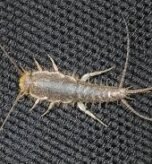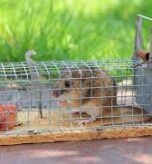No-see-ums, also known as biting midges or sandflies, are tiny yet highly irritating insects that can ruin any outdoor activity. Because of their minuscule size, typically just 1 to 3 millimeters, they are almost impossible to spot until their painful bites appear. Therefore, understanding how to protect yourself is essential. This guide provides a professional overview of no-see-ums, offering effective strategies for prevention, bite treatment, and management.
Understanding No-See-Ums and Their Biology
What Are No-See-Ums?
No-see-ums are small biting flies from the family Ceratopogonidae. They have a distinct humpbacked appearance and short mouthparts. Unlike mosquitoes that pierce the skin, no-see-ums use sharp mandibles to slice into it, which often causes a more immediate and painful irritation.
Where Do No-See-Ums Live and Breed?
These insects thrive in warm, humid environments, making them a common nuisance in coastal regions and wetlands around the world. Their breeding sites are typically moist areas rich in organic matter. Consequently, you will find them in:
- Damp soil and mud
- Decaying leaves
- The edges of ponds, streams, and swamps
When Are No-See-Ums Most Active?
No-see-ums have peak activity during the calm air of dawn and dusk. As weak fliers, they tend to avoid windy conditions. While their life cycle is short—just two to six weeks—they reproduce rapidly. In the United States, their most active season is June and July, though in places like Florida, they can be present year-round.
Why Do Female No-See-Ums Bite?
Only female no-see-ums bite humans and other animals. This behavior is driven by their biological need for protein-rich blood, which nourishes their eggs and is essential for reproduction. In contrast, male no-see-ums feed on flower nectar.
The Health Impact of No-See-Um Bites
Symptoms of No-See-Um Bites
Bites from no-see-ums typically appear as small, dark red bumps, often grouped together in clusters. The bites cause intense itching and irritation that can develop into raised welts or blisters. These painful marks can last for several days or even up to two weeks.
Are No-See-Um Bites Dangerous?
While their bites are painful, no-see-ums are not considered significant vectors of human disease in the United States or Australia. The primary concern is the potential for severe local allergic reactions in sensitive individuals. In contrast, mosquitoes pose a much higher health risk due to their role in transmitting serious illnesses like malaria and dengue fever.
Effective Strategies for Preventing No-See-Um Bites
Personal Protection from No-See-Ums
The Best Clothing for Protection
One of the most effective ways to prevent bites from no-see-ums is to wear long, loose-fitting, and light-colored clothing. Tightly woven fabrics are dense enough to prevent the insects from biting through. For complete protection, consider wearing a netted bug hat to shield your head and face, as well as gloves and gaiters to protect your hands and ankles.
Using Insect Repellents Against No-See-Ums
Applying an effective insect repellent is a key preventive measure.
- EPA-Registered Repellents: Look for products containing DEET, Picaridin, or Oil of Lemon Eucalyptus. DEET offers long-lasting defense, while Picaridin is a popular alternative with a more pleasant smell.
- Permethrin-Treated Clothing: For additional protection, use clothing treated with permethrin, which repels and kills various insects, including no-see-ums.
- Natural Alternatives: Some natural oils like lemon eucalyptus, soybean, peppermint, and lavender may offer some protection. Additionally, some people find that oily barriers like petroleum jelly or cocoa butter can create a physical barrier that no-see-ums cannot penetrate.
Environmental Control to Manage No-See-Ums
Securing Your Home from No-See-Ums
To keep no-see-ums from getting inside, you must secure your home. Because they are so small, standard 16-mesh window screens are often not enough. You need to install fine-mesh screens with a smaller aperture (0.75mm) to keep them out. Furthermore, sealing small cracks and crevices around windows and doors can help deter entry.
Managing Your Outdoor Environment
Modifying your yard can significantly reduce the no-see-um population.
- Keep your yard dry by mowing grass regularly and emptying any sources of standing water.
- Trim trees and bushes, and rake leaves and debris to eliminate breeding grounds.
- Use fans in outdoor seating areas, as even a moderate airflow can keep these weak fliers away.
- For a more comprehensive approach, professional pest control services can provide targeted treatments, including larvicides for breeding sites.
How to Treat Bites from No-See-Ums
If you do get bitten, prompt action can help alleviate the discomfort.
Immediate Care for No-See-Um Bites
First, wash the affected area with warm water and mild soap to clean the skin. Afterward, apply an ice pack or a cold compress to reduce swelling and numb the area, which provides immediate relief from itching.
Over-the-Counter and Natural Remedies for Itching
- Creams and Gels: An over-the-counter hydrocortisone cream or an antihistamine gel can effectively reduce itching.
- Oral Antihistamines: Medications like Benadryl or Claritin can help minimize allergic reactions.
- Natural Remedies: A paste made from baking soda and water can soothe inflamed skin. Applying witch hazel, aloe vera gel, or diluted tea tree oil can also help cool the bites and speed up healing.
Most importantly, you must avoid scratching the bites. Breaking the skin can introduce bacteria, which can lead to a secondary infection and prolong the healing process.
When to See a Doctor for No-See-Um Bites
While most bites from no-see-ums resolve on their own, you should seek medical help if you experience signs of a severe allergic reaction, such as significant swelling, difficulty breathing, or dizziness. Additionally, if you see signs of infection, like pus or a spreading rash, you should consult a doctor promptly.
Conclusion
Effectively managing no-see-ums requires a multi-faceted approach that combines personal protection with environmental controls. By understanding their behavior, using effective repellents, and maintaining an environment that is less hospitable for breeding, you can enjoy the outdoors with minimal discomfort. Prioritizing these robust preventative strategies is the key to mitigating the nuisance caused by these unseen adversaries.



